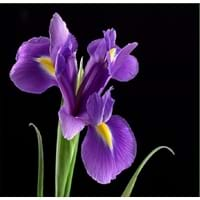Color
Blue, Orange, Pink, Purple, White, Yellow
Orange, Pink, Purple, Red, White, Yellow
Color Meaning
Blue - Peace and Serenity, Orange - Satisfaction and Passion, Pink - Sensitivity and Love, Purple - Elegance and Pride, White - Purity and Innocence, Yellow - Happiness and Friendship
Orange - Satisfaction and Passion, Pink - Sensitivity and Love, Purple - Elegance and Pride, Red - Courage, Desire and Love, White - Purity and Innocence, Yellow - Happiness and Friendship
Line
Not Available
Not Available
Silhouette
Not Available
Not Available
Blossom Texture
Not Available
Not Available
Form
Not Available
Not Available
Sunlight
Full Sun, Part Sun
Full Sun
Watering
Enough
Diligently
Type of Soil
Any Soil, Loamy, Sandy
Loamy
Essential Fertilizers
Lime stone, Nitrogen
Lime stone, Sulphur
Common Pests and Diseases
List of Pests
Aphids, Nematodes, Slugs
Unknown, Unknown, Unknown
List of Diseases
Nematodes
Unknown
Bloom Time
All Summer Season, Fall Season, Spring Season
Early Summer Season
Origin
Asia, Europe, United States
Asia
Interesting Facts of
- In Greek mythology Iris is called the goddess of rainbow, as this flower comes in various colors just as rainbow.
- The purple iris is the Tennessee's state flower.
- The Rose comes in various colors, although a "black rose " is not literally black but a dark red.
- A single rose suggests utmost devotion while two rose entwined together says "Marry me".
Lifespan
Perennials - a plant that lives for three or more years
Annuals - complete its full life cycle in one growing season
Habit
Herbs, Shrubs
Shrubs
Uses
Not Available
Not Available
Health Benefits
Best remedy for Cough & Cold, Treats rheumatism
Unknown, Unknown, Unknown, Unknown, Unknown, Unknown
Medicinal Uses
Have diuretic properties, prevents dryness and flaky skin
Unknown, Unknown
Culinary Uses
NA
Unknown, Unknown, Unknown, Unknown, Unknown, Unknown
Cosmetic Uses
Best remedy for dandruff, Softens skin, Used in Perfumes
Best for Healing, Unknown, Unknown, Unknown, Used after facial and cleansing, Unknown, Unknown, Unknown
Occasional Uses
Anniversary, Wedding
Father's Day, Funerals, Sympathy
Allergy
Abdominal Pain, Itching, Itchy eyes, Nausea, Vomoting
Unknown
Scientific Name
Iris Versicolor
Dendranthema grandiflorum
Sub kingdom
Tracheobionta
Tracheobionta
Super Division
Spermatophyte
Spermatophyte
Division
Magnoliophyta
Magnoliophyta
Class
Liliopsida
Magnoliopsida
Family
Iridaceae
Asteraceae
Sub Family
Iridoideae
Asteroideae
Genus
Not Available
Not Available
Number of Species
Not Available
Not Available
More about Iris and Chrysanthemums Facts and color
You must be curious to know more about Iris and Chrysanthemums facts and color. flowers.comparespecies.com will let you know all the Interesting Facts about Iris and Chrysanthemums. Iris comes in Blue, Orange, Pink, Purple, White, Yellow colors whereas Chrysanthemums flowers are with Orange, Pink, Purple, Red, White, Yellow colors. Other Iris and Chrysanthemums facts will definitely amuse you.
Iris and Chrysanthemums growing conditions
Absolute growing condition is the only key to keep plants in good health and in good shape. Let’s learn about essential Iris and Chrysanthemums growing conditions. Iris requires Full Sun, Part Sun and Enough watering with 6.80 of Any Soil, Loamy, Sandy soil. Chrysanthemums needs Full Sun and Diligently watering with 6.00 of Loamy soil. Get other Iris and Chrysanthemums facts in the sections below.
Iris and Chrysanthemums Facts
Want to know about Iris and Chrysanthemums facts? Get all the Iris and Chrysanthemums facts here.
Iris and Chrysanthemums Classification
After knowing about various Iris and Chrysanthemums facts, let's study their classification. Based on genetic and physical features, Iris and Chrysanthemums classification starts with knowing their scientific name. The scientific name of Iris and Chrysanthemums is Iris Versicolor and Dendranthema grandiflorum respectively. Iris belongs to Iridaceae family whereas Chrysanthemums falls under Asteraceae family. Also check out Flowers by Color so as to plant colorful aroma in the garden.





